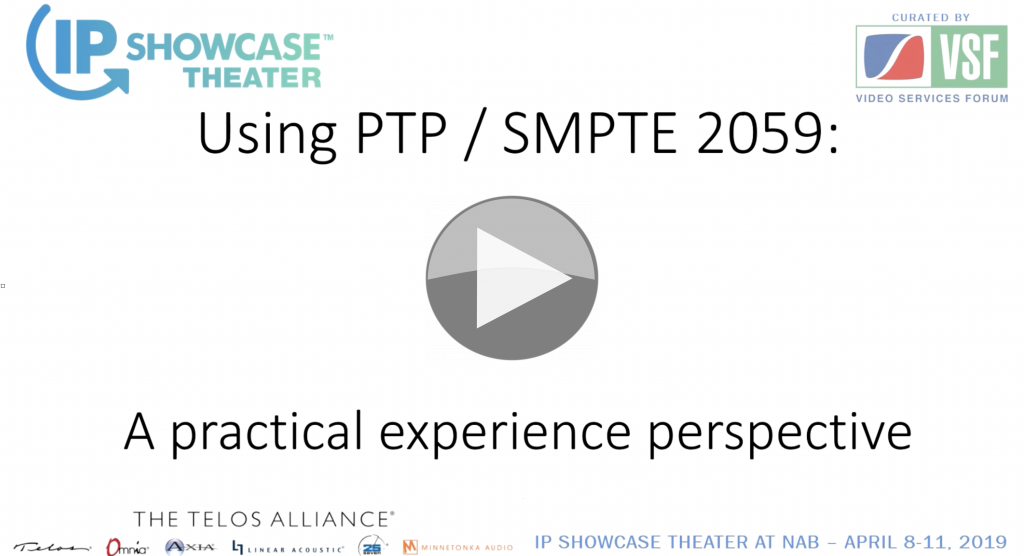NAB 2019 saw another IP Showcase with plenty of talks on the topic on many people’s minds: PTP and timing in IP systems. It seems there’s a lot which needs to be considered and, truth be told, a lot of people don’t feel they have the complete list of questions to be asking and certainly don’t know all the answers.
So, here, Greg Shay from Telos talks about the learnings from his extensive experience with timing IP signals and with PTP under SMPTE 2059. He hits the following topics;
- Must you always have a GPS reference for the PTP master?
- Are PTP-aware switches always necessary?
- Can you safely not use PTP Peer Delay requests / responses?
- What is the effect of internal oscillator tolerance and stability when designing PTP client equipment?
To my ears, these are 4 well placed questions because I’ve heard these asked; they are current in the minds of people who are grappling with current and prospective IP installations.
Greg treats gives each one of these due time and we see some interesting facts come out:
You don’t always need a time-synchronised PTP master (pretending to be in 1970 can work just fine).
Compensating for PTP Peer Delay can make things worse – which seems counter-intuitive to the point of PTP Peer Delay requests.
We also see why PTP-aware switches matter and a statistical method of managing without.
This is a talk which exemplifies IP talks which ‘go deeper’ than simply explaining the point of standards. Implementation always takes thought – not only in basic architecture but in use-cases and edge-cases. Here we learn about both.
Speakers
 |
Greg Shay CTO, The Telos Alliance |


